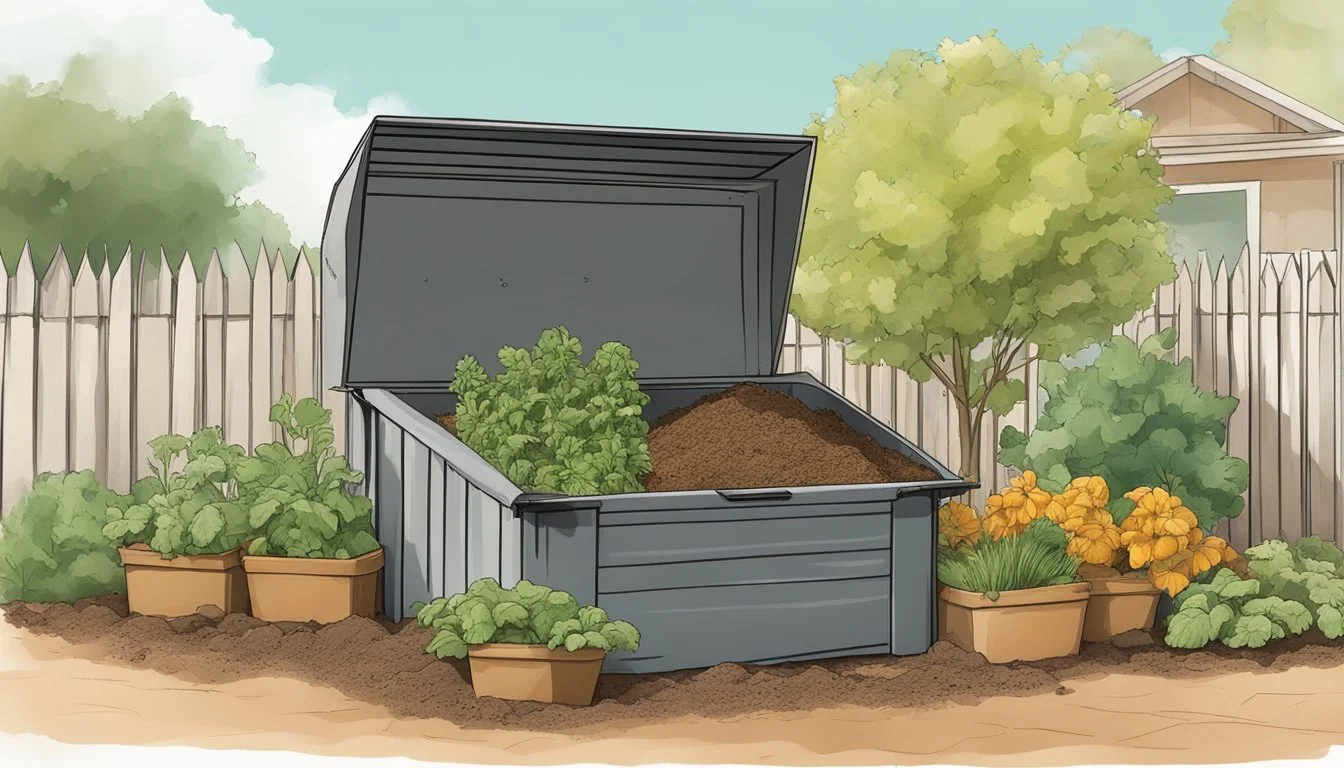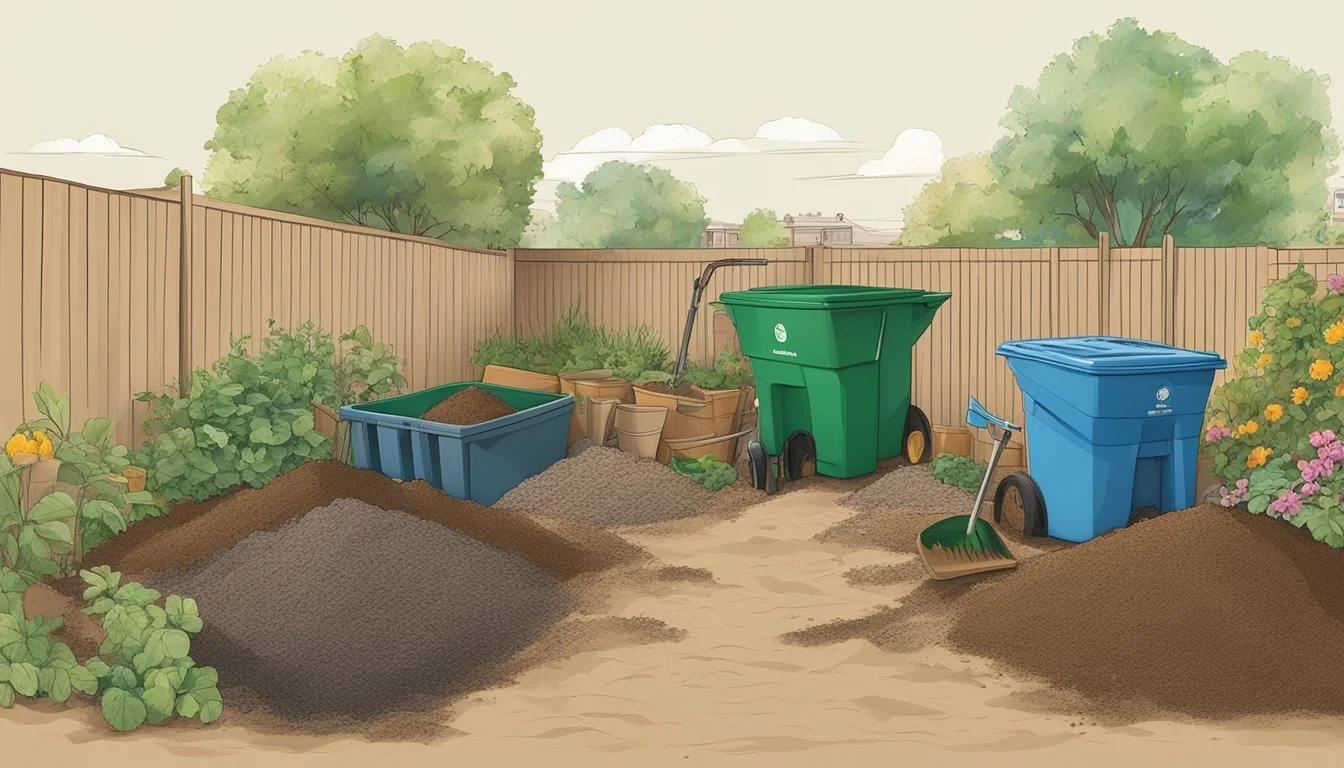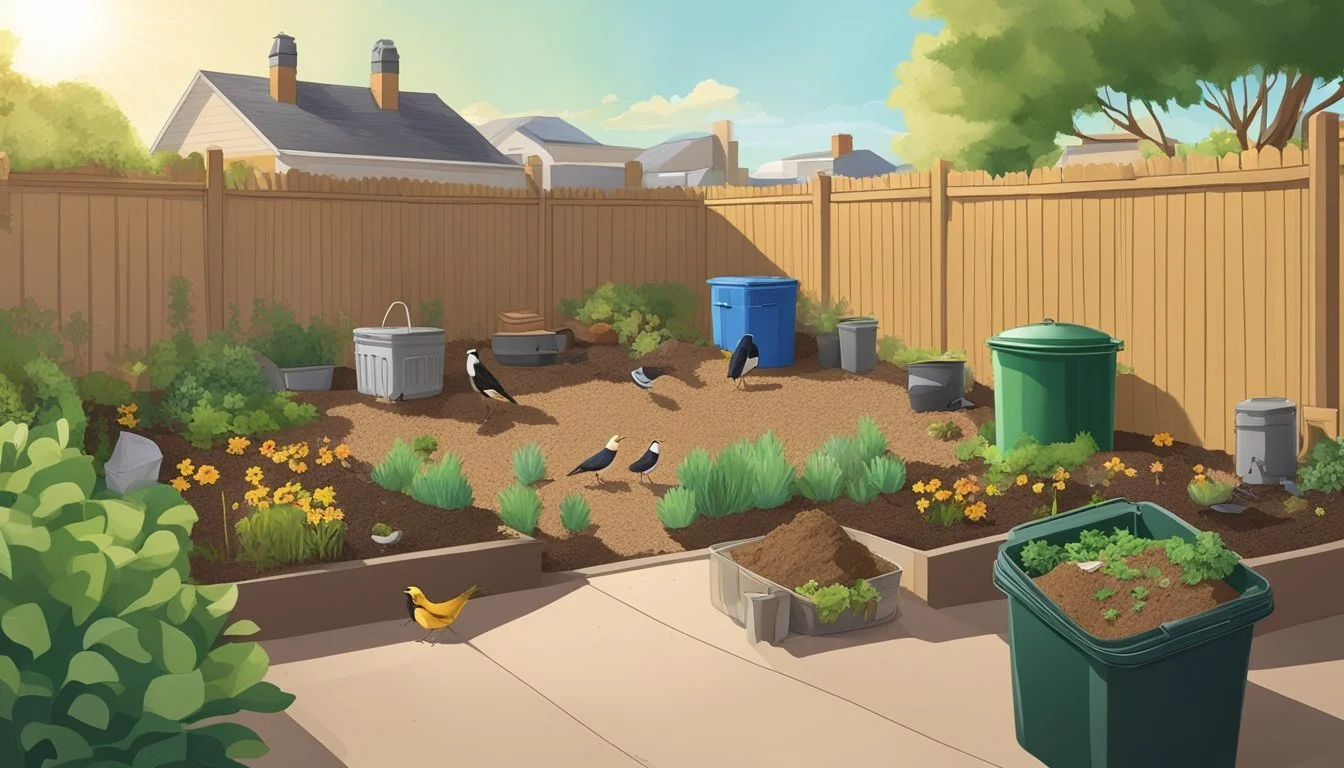Guide to Composting in Pueblo, CO
Sustainable Waste Management Strategies
Composting in Pueblo, Colorado, is a growing practice among residents looking to reduce waste and enhance the quality of their soil. By turning organic matter such as food scraps, yard waste, and paper products into valuable compost, they contribute to a sustainable ecosystem. This natural process not only diverts waste from local landfills, where it would otherwise produce methane, a potent greenhouse gas, but also results in nutrient-rich soil amendments that can greatly benefit gardens and landscapes in the semi-arid climate of Pueblo.
The community of Pueblo has access to resources and educational programs to support their composting efforts. Local organizations, like the Colorado State University Extension Office in Pueblo, offer workshops and guidance on how to manage at-home compost systems, ranging from traditional compost piles to worm bins. Residents can learn about the essential components for successful composting: organic matter, water, air, and microorganisms, and how to balance these elements to create a thriving compost system.
With an understanding of Pueblo’s specific environmental conditions, such as the region’s dry weather and distinct seasons, composting becomes an even more powerful tool. Efficient composting can help retain moisture in the soil, suppress plant diseases, and provide a haven for beneficial organisms that support plant growth. Thus, composting in Pueblo is not only an act of waste reduction but also an investment in the health of the local environment.
Basics of Composting
Composting is a simple yet impactful process for recycling organic matter. It turns kitchen scraps and yard waste into valuable soil amendment, enriching gardens while reducing landfill contribution.
What Is Composting
Composting is the aerobic decomposition of organic materials by microorganisms into a rich soil-like substance known as compost. This process requires a balance of "greens," which provide nitrogen, and "browns," which supply carbon. Effective composting also needs adequate moisture, air, and proper temperature to encourage the growth of beneficial bacteria and fungi that breakdown the organic matter.
Benefits of Composting
Composting confers numerous benefits such as enriching the soil, providing essential nutrients to plants, and promoting soil microbes that aid plant health. It is a natural method to manage yard and kitchen waste. By converting organic matter into compost, gardeners can improve soil structure, moisture retention, and reduce the need for chemical fertilizers.
Enriches soil
Reduces the need for chemical fertilizers
Encourages the production of beneficial bacteria and fungi
Composting and Climate Change
Composting plays a significant role in mitigating climate change. Organic waste in landfills generates methane, a potent greenhouse gas. By diverting waste from landfills through composting, methane emissions are significantly reduced. Moreover, the use of compost can sequester carbon in the soil, offsetting some of the impacts of climate change.
Reduces methane emissions from landfills
Helps sequester carbon in the soil
Setting Up Your Compost Pile
Successful composting starts with setting up the compost pile correctly. It involves selecting a suitable location, choosing the right structure, and balancing organic materials for optimal decomposition.
Choosing a Location
The ideal location for a compost pile is a well-draining, easily accessible spot in either a backyard or a community garden. It should offer a balance of sun and shade—too much heat may dry out the pile and excess shade may keep it too wet. The chosen spot should be close to a water source but also tucked away to maintain the aesthetics of the outdoor space.
Composting Structures
One may utilize different types of composting structures, from simple heaps to contained bins. Options vary from open bins, which provide easy access for turning the compost, to closed tumblers that protect against pests and retain heat. The structure should accommodate air flow and moisture retention, two critical factors for effective composting.
Ingredients for Your Compost
Balance is crucial when adding ingredients to a compost pile. A good mix includes:
Greens: Provide nitrogen and include materials like vegetable scraps, coffee grounds, and fresh leaves.
Browns: Supply carbon and consist of items like dry leaves, twigs, and paper.
Material Type Role in Compost Vegetable Scraps Green Nitrogen source Coffee Grounds Green Nitrogen source Dry Leaves Brown Carbon source Twigs Brown Carbon source Paper Brown Carbon source
The ratio of browns to greens is important to maintain; often recommended is about two-thirds brown materials to one-third green materials. This balance helps to speed up the decomposition process and prevents odors, ensuring a healthy compostable environment.
Managing Your Compost
Effective compost management in Pueblo, Colorado, requires a balance of materials and careful monitoring. By understanding the key components of composting, one can maintain a healthy and efficient composting system.
Balancing Greens and Browns
The compost pile should comprise a mix of 'greens' (nitrogen-rich materials such as vegetable scraps) and 'browns' (carbon-rich materials like leaves and twigs). A general ratio to aim for is 1 part greens to 3 parts browns. This balance helps to maintain the microorganisms that are essential for breaking down the materials into compost.
Turning and Aeration
Regular turning of the compost provides the necessary air to speed up the decomposition process. Turn your compost pile every week to introduce oxygen and distribute moisture evenly. The aeration can also help in controlling unwanted odors, as it discourages the anaerobic conditions that often cause a compost pile to smell.
Moisture and Temperature Control
For an optimal composting process, maintain the moisture level akin to a wrung-out sponge. Water it if the pile becomes too dry, or add dry materials if it is overly wet. The temperature within a well-managed compost pile should feel warm to the touch, which indicates active decomposition.
Troubleshooting Common Issues
Be on the lookout for signs of an unhealthy compost pile, such as persistent odor, which suggests an imbalance in moisture or the greens-to-browns ratio. Pests are another common issue that can be mitigated by burying food scraps deep within the pile and maintaining proper moisture levels. Moreover, if the compost is not heating up, it may need more turning or additional nitrogen-rich material to reignite the decomposition process.
What to Compost
In creating a healthy compost system in Pueblo, CO, understanding what to add is crucial. Composting involves a balance of 'green' high-nitrogen materials and 'brown' high-carbon materials, while certain items must be excluded to avoid attracting pests or creating odors.
Acceptable Greens
'Green' materials provide nitrogen, an essential component for composting. Here’s a list you can add to your compost bin:
Food scraps: Fruit and vegetable scraps are excellent for composting.
Coffee grounds: A rich source of nitrogen, coffee grounds are beneficial for the compost pile.
Grass clippings: These are quick to decompose and add necessary green matter.
Tea bags: Make sure they are made of compostable material, not plastic.
Eggshells: Crushed eggshells add calcium, but they must be rinsed and dried.
Acceptable Browns
'Brown' materials are carbon-rich and provide the necessary energy for microorganisms to break down the greens. Include the following:
Shredded newspaper: This should be non-glossy and not colored ink.
Cardboard: Ensure it's clean and free of any plastic or waxy coatings.
Wood chips: Small chips are preferable as they break down faster than larger pieces.
Items to Exclude
Avoid adding these items to prevent ruining your compost pile:
Meat: Can attract pests and cause unpleasant odors.
Dairy products: Similar to meat, dairy can create odor problems and attract rodents.
Bones: They take a very long time to decompose and can attract animals.
Oils, grease: These substances can upset the balance of your compost and attract pests.
Pet waste: Can introduce harmful pathogens or parasites into your compost.
Special Types of Composting
In Pueblo, Colorado, specialized composting methods cater to different needs and preferences. These techniques utilize various organisms and processes to break down organic matter more efficiently or conveniently.
Vermicomposting
Vermicomposting utilizes worms, particularly red wigglers, to break down organic waste. These creatures work to convert kitchen scraps and garden waste into nutritious compost. It's a suitable method for indoor composting because it is odorless and compact. Pueblo residents can maintain a vermicomposting system even in apartments or small spaces.
Bokashi Composting
Bokashi composting is a fermentation process that uses a mix of microorganisms to decompose organic matter anaerobically. This method can handle a variety of waste types, including meat and dairy, which are usually not recommended for other composting methods. Bokashi composting is fast, typically taking only a couple of weeks to complete the fermentation stage before the material can be added to a compost pile or buried in garden soil.
Community Composting Initiatives
Pueblo promotes community composting as a way to encourage sustainable waste management practices. These initiatives can take the form of large-scale composting operations or collaborative efforts within community gardens. Participants contribute their organic waste and in return, share in the resulting compost to enrich their gardens, creating a closed-loop system that benefits the entire community.
Using Finished Compost
Finished compost, often referred to as black gold by gardeners, is a key ingredient to enriching the soil and ensuring a vibrant garden. It's nutrient-rich and ready to support plant growth, improve soil structure, and enhance the garden's overall health.
Signs of Compost Readiness
A clear indication that compost is ready for use is when it's dark, crumbly, and has an earthy smell, devoid of any sharp, sour odors. There should be no recognizable food scraps, and it should be cool to the touch as the microbial activity has subsided.
Applications in the Garden
Compost can be used in various ways in the garden. One can mix it into the top layer of soil to improve its quality before planting or sowing. It's also effective as a mulch around established plants, providing them with a steady influx of nutrients and helping with moisture retention. Mixing compost with soil at the bottom of planting holes gives new plants a healthy start. To boost the garden's harvest, finished compost should be added seasonally to keep the soil nutrient-rich and conducive to growth.
Other Uses for Compost
Beyond the garden, compost can benefit houseplants by serving as a potting mix additive. It can also be applied to lawn areas as a natural fertilizer. Compost even plays a role in erosion control on slopes by improving soil structure and helping to hold soil in place. By employing finished compost in these ways, one can reduce waste and continue the cycle of returning organic matter to the Earth.
Local Resources and Regulations
Residents of Pueblo, Colorado, have access to a wealth of resources for composting as well as a comprehensive framework of regulations that guide the practice. It is essential for individuals and businesses alike to familiarize themselves with these provisions to ensure environmentally responsible composting.
Composting in Pueblo
In Pueblo, individuals engaging in composting can foster a conducive environment for the natural breakdown of organic material. This process not only contributes to soil enrichment but also helps reduce the volume of waste directed to landfills. Community gardens often serve as a platform for local residents to exchange composting tips, learn about weed seed and disease management, and understand how to mitigate pathogens in compost.
Compost Education: Programs through entities such as the CSU Extension-Pueblo Office provide expertise on creating a nutrient-rich compost.
Soil Amendment: Residents are advised that while compost enriches soil, it's not a substitute for fertilizer. Use of compost in gardening contributes to healthier vegetation and less dependency on chemical soil treatments.
Community Resources for Gardeners
Community resources offer vital support for those interested in composting and recycling in Pueblo. Those looking to start or enhance their composting practices can turn to local initiatives for assistance.
Outreach and Education: Garden clubs and community centers may provide workshops that guide individuals through the composting process, advising on how to avoid unwanted weed seeds and pathogens.
Recycling Integration: Composting is part of a broader recycling effort in Pueblo, as demonstrated in guide materials provided by local authorities such as the Pueblo Area Recycling Information, integrating organic waste management with other recycling initiatives.
Government Regulations
Government regulations are in place to ensure that composting activities are managed in a way that protects public health and the environment.
Commercial Facilities: Information on the standards and oversight for commercial composting in Colorado, including facility design and operation, can be found in Section 14 of the state's solid waste regulations, which do not apply to backyard or agricultural composting facilities as noted in the Department of Public Health & Environment website.
Agricultural Composting: For agricultural settings in which composting might include animal waste or larger quantities of organic material, guidelines are provided by the Composting agricultural wastes page of the Colorado Department of Public Health & Environment, helping to avoid complications from pathogens and ensuring regulatory compliance.
Frequently Asked Questions
What materials do I need to start composting in Pueblo?
Composting requires organic matter such as food waste, dried leaves, and cardboard. It's essential to maintain a balance of green and brown materials for a good mixture of carbon and nitrogen.
Can I compost on my balcony or patio?
Yes, individuals can compost on a balcony or patio using a container designed for composting. Ensure it has proper ventilation and a lid to control moisture and odor.
Essential Composting Elements Description Organic Waste Vegetable scraps, fruit peels, coffee grounds Browns Dry leaves, straw, cardboard
How do I layer materials in a compost bin?
For successful composting, alternate layers of green (nitrogen-rich) materials with brown (carbon-rich) materials. This will help to maintain the necessary heat and speed up the decomposition process.
Is it necessary to add heat to a compost pile?
Compost piles generate their own heat as organic materials break down. However, in colder climates, insulating the pile may help maintain the necessary temperatures.
Does composting reduce the amount of trash?
Composting significantly reduces the volume of household waste that would otherwise end up in the trash, contributing to landfill reduction.
How do I know if my compost is ready for use?
Compost is ready when it is dark, crumbly, and has an earthy smell. The original materials should no longer be recognizable.
Conclusion
Composting in Pueblo, Colorado, is a straightforward and environmentally beneficial practice. Individuals who compost contribute to soil enrichment and waste reduction. By managing organic matter at home, they help divert significant amounts of waste from landfills.
In Pueblo, residents can reach temperatures around 125° F in their compost piles, which is ideal for decomposing material and neutralizing weed seeds or diseases. Regular turning of the pile is not essential but does expedite the process.
The environmental benefits of composting are substantial:
Reduces greenhouse gases
Lowers the carbon footprint
Enhances soil quality
Composting tips for Pueblo residents:
Balance "greens" (nitrogen-rich materials) with "browns" (carbon-heavy materials)
Ensure adequate moisture and ventilation for the compost pile
Monitor temperatures to assess the progress
Through these practices, Pueblo residents not only lessen their environmental impact but also create a rich, organic amendment for their gardens. The collective effort of the community has the potential to significantly improve recycling and composting rates in the area, as shown by statewide initiatives.
For those interested in starting or enhancing their composting activities, Pueblo County Extension and other local resources provide valuable guidance and support.











